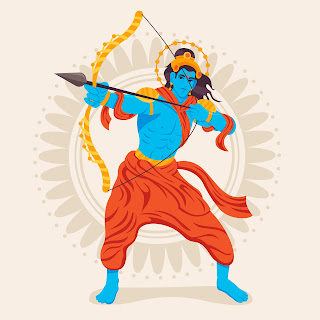Ram Lala Birth Story: Putrakameshti Yajna: Sri Ram Navami
In Hindu cosmology, Satya Yuga, also known as Krita Yuga or the Age of Truth, is the first of the four yugas (ages) that make up the cycle of Yugas. Satya Yuga is considered the golden age, characterized by righteousness, virtue, and truthfulness. It is believed to be an era of perfection and spiritual enlightenment.
Ayodhya, the legendary city and the capital of the Kosala Kingdom, is often associated with the Satya Yuga in Hindu mythology. According to some traditions, Ayodhya is said to have been founded by the Manu, the progenitor of humanity, during the Satya Yuga. The city is believed to have exemplified the virtues and righteousness that characterize this age. Ayodhya is described as a prosperous and well-governed city, known for its grandeur, righteousness, and cultural richness.
Some key features of Dasharatha's Ayodhya include:
Magnificent Palace: Dasharatha's palace in Ayodhya was described as opulent and regal, befitting the stature of a great king. The palace was adorned with various luxuries and facilities.
Well-Planned City: Ayodhya was known for its well-laid-out streets, gardens, and architectural beauty. It was a city that exemplified order and harmony.
People's Prosperity: The citizens of Ayodhya were portrayed as content, prosperous, and happy under the rule of King Dasharatha. The kingdom flourished economically and socially.
Cultural and Religious Significance: Ayodhya was depicted as a city with a rich cultural and religious heritage. Temples, rituals, and festivals were an integral part of life in Ayodhya.
Dharma and Justice: Dasharatha, being a righteous king, ensured that justice and dharma (righteousness) prevailed in Ayodhya. He was revered for his just rule and concern for the welfare of his subjects.
The king of Ayodhya during the time of the Ramayana was King Dasharatha. Dasharatha was a wise and just ruler, belonging to the Ikshvaku dynasty. He was renowned for his valor, righteousness, and adherence to dharma (righteous duty). Dasharatha is a central character in the epic Ramayana, and he played a crucial role in the events leading to the birth and life of Lord Rama, the seventh avatar of Lord Vishnu.
King Dasharatha had three queens: Kaushalya, Kaikeyi, and Sumitra.
Kaushalya: She was the principal and eldest queen of King Dasharatha. Kaushalya was the mother of Lord Rama, the seventh avatar of Lord Vishnu.
Kaikeyi: Kaikeyi was another queen of Dasharatha. She played a significant role in the Ramayana due to her role in demanding boons from Dasharatha, which led to Lord Rama's exile.
Sumitra: Sumitra was the third queen of Dasharatha and the mother of twins, Lakshmana and Shatrughna.
King Dasharatha, facing the dilemma of not having an heir to the throne, decided to perform a Yajna to seek a solution. He sought the guidance of Sage Vashishta, who suggested performing the Putrakameshti Yajna, a special ritual aimed at obtaining progeny. Following the sage's advice, King Dasharatha performed the Yajna with great devotion and sincerity.ge Vashishta when he faced the predicament of not having an heir to the throne.
During the Yajna, various rituals and ceremonies are conducted, and specific mantras are chanted to invoke the blessings of deities, seeking their favor for the birth of a child. Additionally, a special offering called "havishya" is prepared and offered into the sacrificial fire.
In the case of King Dasharatha, after the completion of the Putrakameshti Yajna, the gods blessed him with a divine pudding called payasam. This pudding was then distributed among his queens, leading to the subsequent births of Lord Rama, Bharata, Lakshmana, and Shatrughna.
The Putrakameshti Yajna is a symbolic and spiritual ritual in Hinduism, emphasizing the importance of progeny and continuation of family lineage. While it has historical and mythological significance, modern-day interpretations and practices may vary among individuals and communities.
The divine beverage was then distributed among his queens by the sage Rishyasringa. Kaushalya received half, while Kaikeyi and Sumitra each got a quarter. After consuming the payasam, the queens soon found themselves pregnant.
In the month of Chaitra, during the bright half of the lunar month, on the ninth day (Navami), Queen Kaushalya gave birth to a radiant and divine child. This auspicious event marked the incarnation of Lord Vishnu as Sri Ram. His birth is celebrated as Ram Navami, and it is a joyous occasion for Hindus around the world.
Jay Sri Ram!










